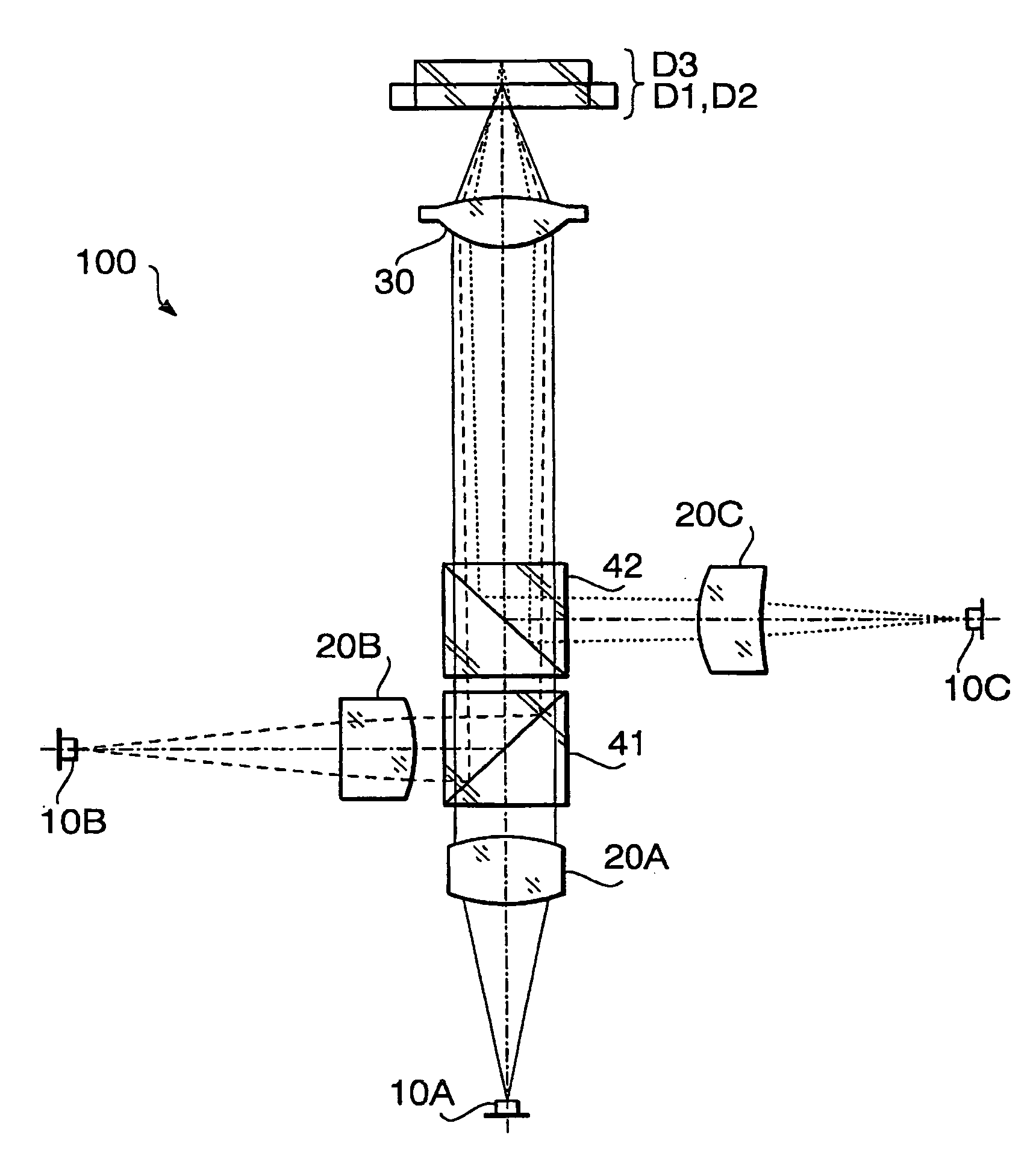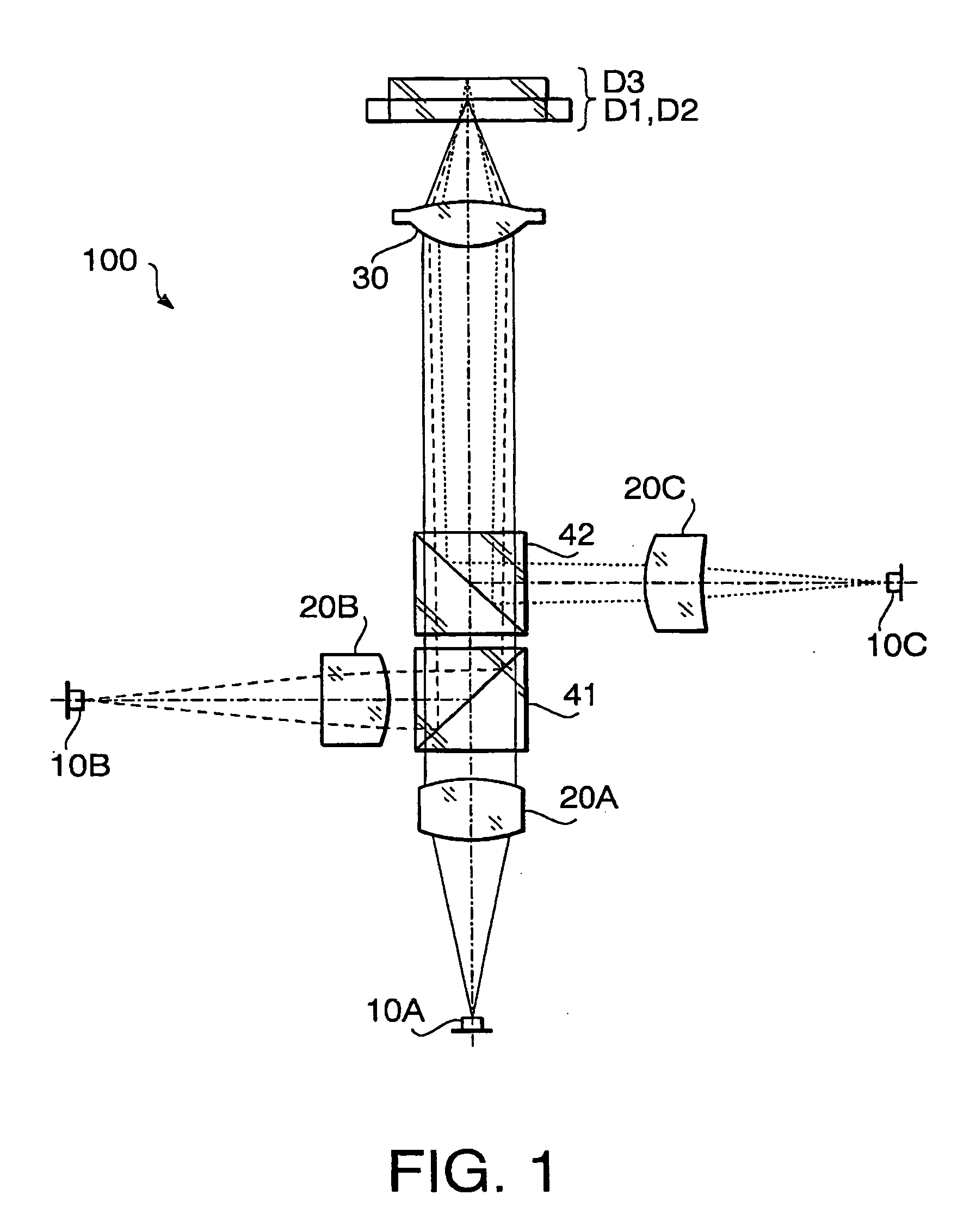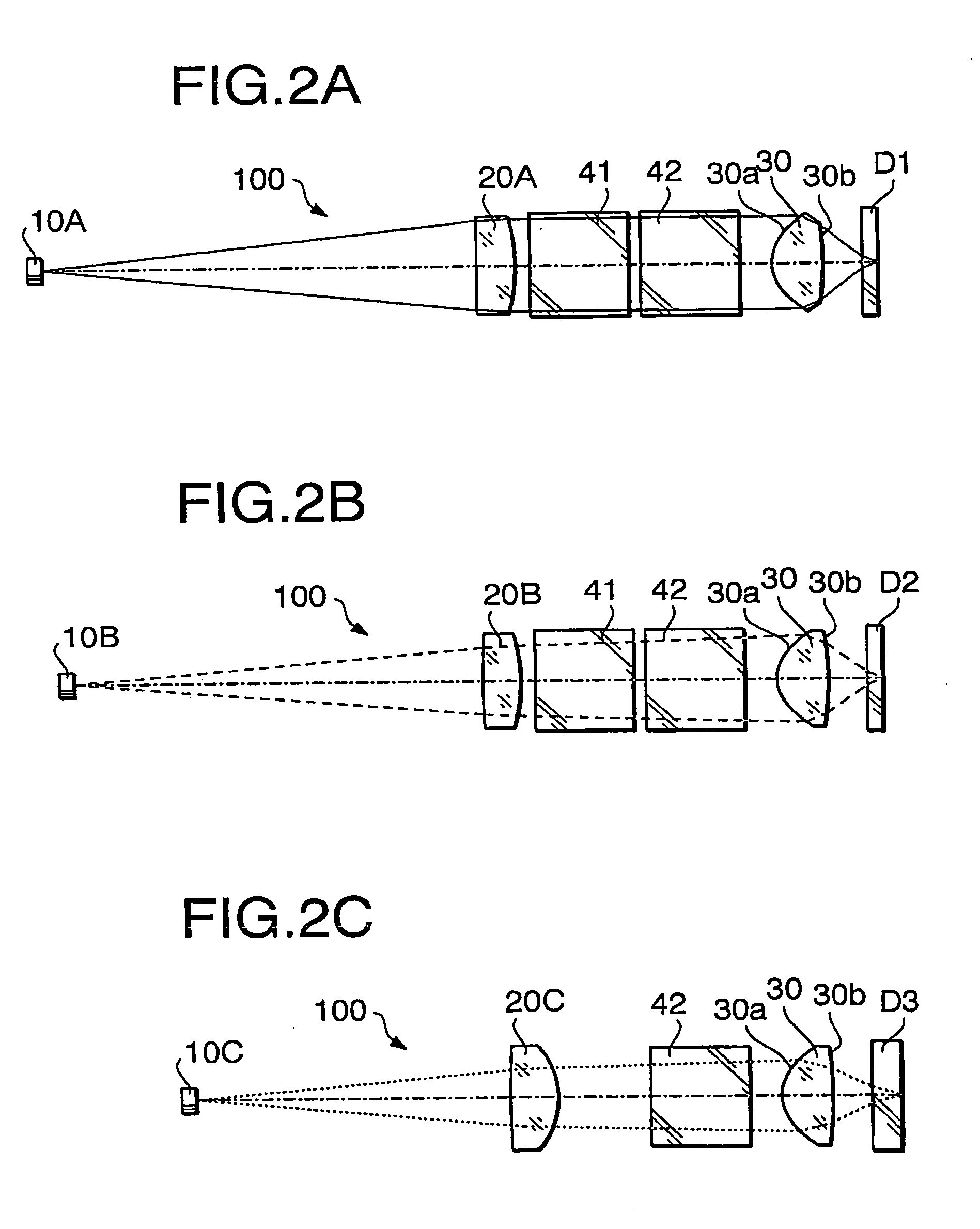Objective lens for optical pick-up
- Summary
- Abstract
- Description
- Claims
- Application Information
AI Technical Summary
Benefits of technology
Problems solved by technology
Method used
Image
Examples
first example
The optical pick-up 100 according to a first example has the configuration shown in FIGS. 1 and 2. Performance specifications of the objective lens 30 according to the first example are shown in Table 1.
TABLE 1First laserSecond laserThird laserbeambeambeamDesign405nm657nm785nmwavelengthf3.004mm3.108mm3.130mmFocal lengthNA0.6490.6020.451magnification0.0000.000−0.074
In Table 1 (and in the following similar Tables), the design wavelength is a wavelength suitable for the recordation / reproduction of the optical disc, f represents a focal length (unit: mm) of the objective lens 30, NA represents the numerical aperture. In Table 1, the performance specifications are indicated with regard to each of the first laser beam (the optical disc D1), the second laser beam (the optical disc D2) and the third laser beam (the optical disc D3).
Table 2 shows a numerical configuration of the optical pick-up 100 when the optical disc D1 (the first laser beam) is used, Table 3 shows a numerical confi...
second example
Hereafter, the optical pick-up 100 according to a second example will be described. The optical pick-up 100 according to the second example has a configuration substantially the same as that of the first example. That is, the numerical data shown in Tables 1-9 is also applied to the second example. Only the diffracting structure formed within the first surface 30a of the objective lens 30 is different from that of the first example.
The objective lens 30 according to the second example has the diffracting structure shown in FIG. 4. Table 10 shows numerical data of the diffracting structure formed on the first surface 30a of the objective lens 30.
TABLE 10La (unit: λ1)FromAnnularFromadjacentzoneannularannularNo.HsHezone #0zone #00.0000.9770First #10.9771.205−8−8Region #21.2051.346−62 #31.3461.449−14−8 #41.4491.530−122 #51.5301.601−15−3Second #61.6011.661−18−3Region #71.6611.713−21−3 #81.7131.759−24−3 #91.7591.801−27−3#101.8011.839−30−3#111.8391.870−33−3#121.8701.905−36−3Third#131....
third example
The optical pick-up 100 according to a third example will be described. The configuration of the optical pick-up 100 according to the third example is shown in FIG. 1. In this example, configurations of the coupling lens 20A and the coupling lens 20B are the same. Therefore, the coupling lens 20A and the coupling lens 20B are referred to as a coupling lens 200A_1 and a coupling lens 200A_2, respectively, in this example. FIG. 8A shows a configuration of the optical pick-up 100 when the optical disc D1 is used, FIG. 8B shows a configuration of the optical pick-up 100 when the optical disc D2 is used, and FIG. 8C shows a configuration of the optical pick-up 100 when the optical disc D3 is used.
Performance specifications of the objective lens 30 according to the third example are shown in Table 11.
TABLE 11First laserSecond laserThird laserbeambeambeamDesign405nm657nm785nmwavelengthf3.000mm3.108mm3.121mmFocal lengthNA0.6500.6270.500magnification0.0000.000−0.086
As shown in Table 11...
PUM
 Login to View More
Login to View More Abstract
Description
Claims
Application Information
 Login to View More
Login to View More - R&D
- Intellectual Property
- Life Sciences
- Materials
- Tech Scout
- Unparalleled Data Quality
- Higher Quality Content
- 60% Fewer Hallucinations
Browse by: Latest US Patents, China's latest patents, Technical Efficacy Thesaurus, Application Domain, Technology Topic, Popular Technical Reports.
© 2025 PatSnap. All rights reserved.Legal|Privacy policy|Modern Slavery Act Transparency Statement|Sitemap|About US| Contact US: help@patsnap.com



